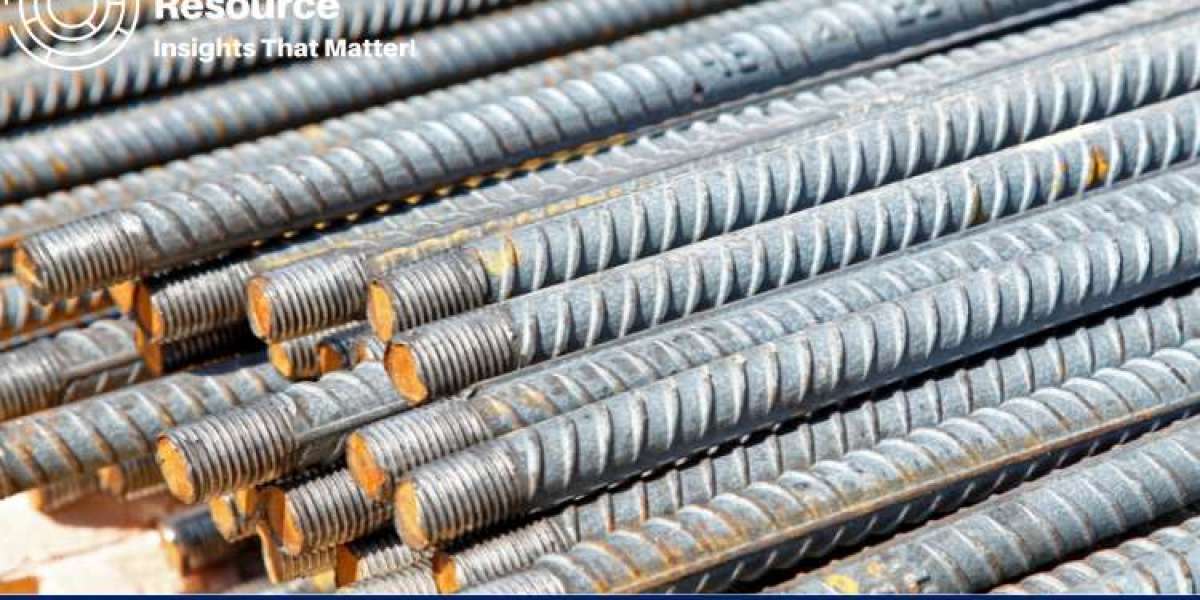The Steel Rebar Price Trend has become a critical focus for industries that rely on construction and infrastructure development, impacting everyone from developers and contractors to real estate firms and consumers. As a key material in reinforced concrete structures, the price of steel rebar directly influences construction costs and overall project budgets. This article delves into the Steel Rebar Price Trend, offering a detailed analysis, historical and current price charts, news updates, an index overview, and graphical insights to help industry stakeholders better understand market dynamics.
Understanding the Steel Rebar Price Trend
Steel rebar, or reinforcing bar, is a long steel product used to strengthen and support concrete in construction projects. The Steel Rebar Price Trend reflects the impact of factors such as demand from construction projects, raw material costs (like iron ore and scrap steel), energy expenses, and geopolitical influences.
Request a Free Sample – https://www.procurementresource.com/resource-center/steel-rebar-price-trends/pricerequest
Recently, steel rebar prices have been affected by increased demand from infrastructure and housing projects globally. Additionally, supply chain issues, production costs, and trade policies have added to price volatility. This comprehensive look at the steel rebar price trend provides insight into the factors driving fluctuations, helping industry professionals and businesses make informed decisions.
Steel Rebar Price Analysis
The Steel Rebar Price Analysis examines the key factors that influence the pricing of steel rebar in the market. These factors include raw material costs, supply-demand dynamics, energy costs, and the regulatory landscape.
Raw Material Costs: The cost of raw materials such as iron ore, coking coal, and scrap steel plays a significant role in determining the price of steel rebar. When these materials are in high demand or limited supply, their prices rise, which in turn drives up the cost of steel rebar. Iron ore prices, in particular, have fluctuated recently due to supply shortages and increased global demand.
Demand in the Construction Sector: Demand for steel rebar is directly tied to construction and infrastructure development activities. Large-scale projects, such as urban development, highways, and public infrastructure, drive up demand for rebar. When construction booms, demand rises, often leading to price increases.
Energy and Production Costs: Steel production is energy-intensive, and any increase in electricity, gas, or fuel costs can lead to higher rebar prices. Rising energy costs due to geopolitical issues or supply disruptions can significantly impact production expenses, pushing rebar prices upward.
Geopolitical and Trade Influences: Trade tariffs, export restrictions, and geopolitical tensions can affect the availability and cost of steel rebar. For instance, tariffs on imported steel or restrictions on scrap metal exports can create supply shortages, driving up prices in regions reliant on imports.
Environmental Regulations: Stricter environmental standards in major steel-producing countries have led to higher production costs. Regulations limiting emissions or enforcing sustainable practices often require steel plants to upgrade their facilities, increasing production costs and, consequently, steel rebar prices.
Steel Rebar Price Chart
A Steel Rebar Price Chart provides historical data on price trends, allowing stakeholders to visualize how prices have changed over time. This information is valuable for planning, budgeting, and anticipating future price movements.
Historical Price Trends: Over the past decade, steel rebar prices have shown both stability and volatility, often rising during periods of strong construction demand and economic growth. However, prices may also experience sharp declines during economic downturns when construction activity slows.
Seasonal Price Variations: The price of steel rebar can experience seasonal fluctuations. For instance, demand typically rises during the spring and summer construction seasons, leading to higher prices, while prices may stabilize or decrease during the winter months when construction slows.
Recent Trends: In recent years, steel rebar prices have shown an upward trend due to rising raw material costs, supply chain disruptions, and increasing global demand for construction materials. A glance at a recent steel rebar price chart reveals how price spikes have occurred during peak construction periods or in response to supply constraints.
Analyzing a steel rebar price chart helps industry players understand patterns and adjust their purchasing decisions based on historical and recent data.
Steel Rebar Price News
Keeping up-to-date with Steel Rebar Price News is essential for stakeholders in the construction and manufacturing sectors. News covering production updates, trade policies, and environmental regulations can all influence the steel rebar price trend.
Market Updates: Recent steel rebar price news indicates that prices remain elevated due to strong demand from construction sectors worldwide. Market analysts suggest that prices may remain high as infrastructure projects accelerate, particularly in developing regions.
Geopolitical Developments: Trade policies and geopolitical tensions have a direct impact on steel rebar prices. For example, trade disputes between major steel-producing countries or export restrictions can disrupt supply chains and lead to price volatility in markets dependent on imported steel.
Supply Chain Challenges: Ongoing supply chain challenges, such as shipping delays, port congestion, and rising transportation costs, are affecting the steel rebar market. Recent news indicates that these factors may continue to influence prices, especially in regions heavily reliant on imported steel rebar.
Environmental Policies and Industry Regulations: Increasing focus on sustainable construction practices and new environmental regulations are impacting steel production. Recent news on government policies encouraging sustainable practices suggests that production costs may rise, reflecting in higher prices for steel rebar.
Staying updated with steel rebar price news allows stakeholders to make timely adjustments in their purchasing and project planning, ensuring they are well-prepared for potential price fluctuations.
Steel Rebar Price Index
The Steel Rebar Price Index is a critical tool for tracking changes in steel rebar prices over time. This index offers a benchmark that reflects the overall trend in the rebar market, helping industry stakeholders monitor and anticipate price shifts.
Tracking Price Movements: The steel rebar price index tracks monthly and annual price fluctuations, giving businesses insight into whether prices are trending upwards, downwards, or stabilizing. This data is essential for contractors, developers, and manufacturers to manage budgets and anticipate future price changes.
Regional Price Differences: Price indexes can vary by region due to local market conditions, supply chain issues, and import/export policies. For example, the steel rebar price index in Asia may differ significantly from that in North America due to differences in production costs, demand, and trade policies.
Comparative Analysis: Comparing the steel rebar price index with other construction materials, such as cement or structural steel, can help stakeholders assess how rebar prices are changing in relation to other essential materials. This comparative analysis provides valuable insights for project budgeting and cost management.
The steel rebar price index is an invaluable tool for understanding long-term price trends and making data-driven decisions in a fluctuating market.
Steel Rebar Price Graph
A Steel Rebar Price Graph provides a visual representation of price trends, making it easier for industry stakeholders to interpret market dynamics and anticipate price changes.
Long-Term vs. Short-Term Trends: A long-term price graph shows how steel rebar prices have evolved over several years, highlighting the impact of major events such as economic recessions, raw material shortages, or increased infrastructure investments. In contrast, a short-term price graph shows recent fluctuations, useful for making immediate purchasing decisions.
Seasonal and Demand-Based Patterns: Price graphs can reveal recurring patterns, such as price increases during peak construction seasons. Recognizing these patterns on a price graph helps stakeholders prepare for periods of high demand and adjust their purchasing and pricing strategies accordingly.
Comparison with Other Building Materials: Steel rebar price graphs often include comparative data with other construction materials, such as structural steel, aluminum, or copper. This comparison helps buyers understand how steel rebar prices align with broader trends in the construction material market.
Using a steel rebar price graph allows businesses to quickly assess market trends and make strategic purchasing decisions based on visual data, enhancing their ability to understand and anticipate changes in the steel rebar price trend.
Contact Us
Company Name: Procurement Resource
Contact Person: Amanda Williams
Email: [email protected]
Toll-Free Numbers:
USA copyright: 1 307 363 1045
UK: 44 7537171117
Asia-Pacific (APAC): 91 1203185500
Address: 30 North Gould Street, Sheridan, WY 82801, USA






